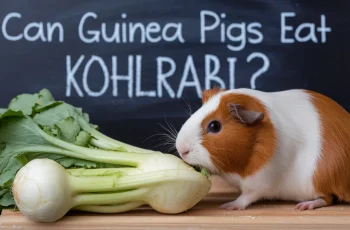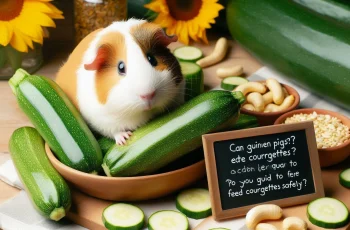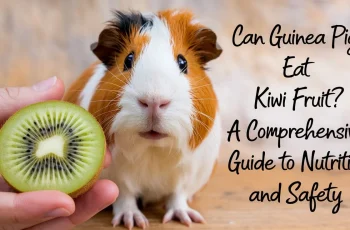Yes, guinea pigs can eat collard greens in moderation as part of a varied, balanced diet. These dark leafy greens are packed with nutrients like Vitamin C, fiber, and antioxidants, making them a healthy option. However, their high calcium and oxalate content means they should only be offered a few times a week, not daily.

🥬 Nutritional Breakdown (Per 100g of Collard Greens):
- Vitamin C (35.3 mg): Essential for guinea pigs, who cannot produce it themselves. It helps prevent scurvy, boosts immunity, and supports tissue repair.
- Calcium (232 mg): Necessary for bone health, but high amounts can lead to bladder stones.
- Fiber (4 g): Supports healthy digestion and prevents bloating or constipation.
- Vitamin A (5019 IU): Promotes healthy vision, skin, and immune function.
- Antioxidants: Help reduce inflammation and support overall well-being.
✅ Health Benefits for Guinea Pigs:
- Boosts Immunity: High Vitamin C content strengthens the immune system.
- Improves Digestion: Fiber aids in regular digestion and prevents discomfort.
- Supports Bone Health: Calcium is beneficial, but only in small, managed amounts.
- Hydration & Variety: Fresh greens add variety and hydration to the diet.
⚠️ Risks of Overfeeding Collard Greens:
- High Calcium Levels: Can contribute to urinary stones or kidney issues.
- Oxalates: Compounds that bind with calcium and may worsen the risk of stones.
- Digestive Upset: Large amounts may cause gas, bloating, or soft stool.
🥗 Feeding Tips:
- Offer 1–2 small leaves at a time.
- Limit feeding to 2–3 times per week to avoid excess calcium.
- Always wash thoroughly to remove pesticides and dirt.
- Introduce slowly and monitor your guinea pig for any changes in digestion or behavior.
- Rotate with other low-calcium vegetables to maintain a balanced nutrient profile.
🌿 Great Veggie Alternatives:
- Romaine Lettuce: Low in calcium, hydrating, and piggy-approved.
- Bell Peppers: High in Vitamin C, colorful, and delicious.
- Cilantro: Fragrant, safe, and typically well-loved by guinea pigs.
- Zucchini: Mild, low in sugar and calcium, good for hydration.
- Kale: Very nutritious but also high in calcium—feed sparingly.

🐹 Final Thoughts:
Collard greens are a nutritious and beneficial treat when fed in moderation. They shouldn’t replace the essentials like unlimited hay and fresh water, but they can certainly enhance your guinea pig’s diet when rotated with other veggies. The key is balance—too much calcium or oxalates can be harmful. When in doubt, consult your exotics vet to tailor a plan specific to your guinea pig’s needs.



